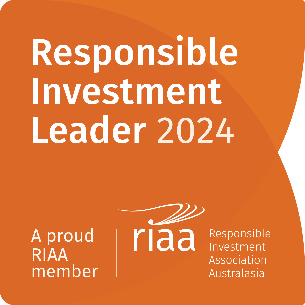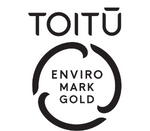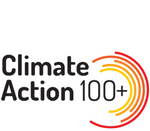The results are in

This month’s interest piece has been written by Devon’s Head of Retail, Greg Smith.
The latest earnings season has wound down to a conclusion on both sides of the Tasman and has once again been heavily scrutinised. We are two years into the pandemic, and while COVID remains in our midst, the ‘hard yards’ are done with, and the end appears to be in sight. That said, while economies are opening up (to varying degrees) the corporate sector continues to face multiple side-effects of the economic medicine administered since March 2020, and the pandemic itself. With so many unknowns, investors have looked to the results season for further insight into how various elements of the corporate sector are tracking.
Companies that have thrived during the pandemic (and some with exuberant valuations to match) were always going to be in the spotlight. This comes as investors search for clues as to what extent conditions remain “good”, as life for a largely vaccinated populous starts to normalise.
By a contrasting token, many "older” economy stocks that have weathered challenges during the pandemic were always going to be in focus to see just how resilient they had been. Of particular interest has been just how close (and how plentiful) the light at the end of the COVID tunnel might be.
Relevant across either end of the spectrum has also been just how well companies are coping with soaring inflation, and to what extent this has impacted earnings and margins. Alongside this, a primary question has been to what extent supply chain pressures (including the scarcity of labour) are easing, or whether there is any relief in sight.
Going into the earnings season (other than multi-decade highs in inflation!) the macro-economic backdrop has been largely positive. Consumers and businesses have been for the most part upbeat, unemployment has been very low (although this has compounded staff shortages in some industries), and economies have continued to rebound.
For similar reasons the pace of future interest rate rises, as central banks engage in tightening activities, has also provided a highly relevant concurrent backdrop. The RBNZ (which met 22 February) chose to maintain a degree of optionality, siding with a 25-basis points hike, rather than 50bps, which was met with some relief by markets.
The RBA (which met on 1 February and again this week) was always expected to do nothing in terms of interest rate rises. The central bank’s claim that inflation in Australia is "different" to other countries provided an accommodative backdrop to the results season on the other side of the ditch.
Overall, with a lot of moving parts, and uncertainties, it was fair to say that the bar of expectation was not particularly high going into the recent earnings season. In the end that bar was jumped more often than it wasn’t.
Marking the overall "results card" by the performance of share-market indices is difficult. While an over-eager pace of interest rate rises was seen as the likely catalyst for investor angst during the month, that was ultimately usurped by Russia’s invasion of the Ukraine. Volatility spiked, with both the Australian and New Zealand markets seeing their biggest one day falls in late February since the onset of the pandemic back in March 2020.
During the course of February, the S&P/ASX200 added 2.1%, while the S&P/NZX50 was 0.7% higher. This is perhaps an unfair reflection of what has been a stronger than expected Trans-Tasman earnings season. The S&P/NZX50 and S&P/ASX200 have both lost over 2% since Vladimir Putin effectively declared war on Ukraine late in February.
The geopolitical shock has therefore “muddied the waters” somewhat in terms of the broader market’s performance in February. Delving into a host of results across multiple sectors provides further evidence here.
Australia
In Australia the market was primed to respond to a positive earnings season, with the S&P/ASX200 having fallen 8% through the first month of the year. Australia was emerging from the Omicron ringer after a "let it rip" reopening strategy, which paved the way for an improving outlook for many segments of the economy. The earnings season generally delivered on cue, with the S&P/ASX200 up as much as 7% from the late January lows, and before developments in the Ukraine took centre stage.
In the end earnings “beats” outnumbered “misses” by a ratio of 4 to 3. While this was not as high as the previous two result seasons, it was nonetheless impressive given a host of challenges to the corporate sector, including rising input cost inflation, supply chain pressures, labour constraints, and Omicron disruptions (all regular topics on earnings calls). Large caps led the way in terms of earnings beats.

There were a number of pervading features, not least of which has been that companies have been doing much better than expected at the top line. Macquarie Research notes that 89% of ASX companies met or beat sales expectations.
Widespread inflation has certainly helped the cause here, which has not surprisingly focused attention on the ability of companies to handle cost pressures and maintain margins. Here the results are less resounding, with around a third of companies missing forecasts for earnings and/or dividends per share. Those companies with strong pricing power have been able to do well, and these have been typically weighted toward the higher cap end of the spectrum. Overall, earnings have still been ahead of expectations. The median company beat the consensus net profit after tax estimates by +0.7%.

Companies generally are also upbeat about the future outlook, although again this is less so for the smaller cap end of town. Overall there have been far more earnings upgrades than downgrades, but more so for larger companies.
The RBA’s decision to play it cool on the rate rise front was a poignant lead-in for the banks to roll out with their updates. The banking sector has of course benefitted from a lending boom during the pandemic (and better than feared bad-debt outcomes), but on the other side, low interest rates have supressed margins.
Updates from the Big Four banks all came out firmly on the positive side of the ledger. Net interest margins have remained under pressure (amid intense competition), but no more so than expected, or than already priced in by the market. Australia’s biggest bank CBA delivered a strong half-year result, which was in many ways eclipsed by National Australia Bank’s update which revealed a 9% lift in quarterly cash earnings. NAB (held in the Devon Alpha, Australian, Sustainability, Trans-Tasman, and Dividend Yield funds) has been doing well in a competitive market and has been taking market share. NAB shares, along with Westpac’s, outperformed during the month sector wise.
Macquarie Group (held in the Devon Trans-Tasman, Alpha, Dividend Yield, and Australian funds) was another that came out with a strong result, and a record one for the bank. While "annuity style" businesses lagged due to the timing of performance fees, markets-facing ones roared on the back of robust investment realisations. Income from commodities was strong, and this has all helped to propel earnings and the balance sheet.
Elsewhere in the financials, rising premiums supported earnings in the insurance sector. That said, perennial results disappointer QBE stayed true to form and disappointed on earnings and dividends. The shares were treated accordingly. The Devon investment team did well on QBE, largely exiting the position ahead of the result.
The iron ore miners shined, showing off their huge cash generating attributes. Rio Tinto posted the second biggest profit in Australian corporate history, with underlying earnings of US$21.4 billion, in line with expectations. The company declared the biggest ever dividend for an Australian company, worth some US$16.8 billion. There has been a new era of financial discipline for the miners where shareholders have been favoured over growth for growth’s sake.
In similar fashion, a newly "unified" BHP, declared its highest interim profit since the back-end of the last commodities super cycle, prior to the GFC. The company announced an underlying profit for the six-month period of US$9.7 billion, up some 57% year on year. BHP has declared a record interim dividend.
China for its part has continued to make noises around elevated iron ore prices, but
the reality is that supply/demand forces will determine prices (as they always ultimately do). The is likewise true for energy, albeit with a huge dose of geopolitical tensions adding further fuel to the recent surge. Energy names are doing very well in this environment, including Santos which reported a record underlying profit.
Another cyclical industry doing well was the media sector. One of the stars of the show here was Nine Entertainment (held in the Devon Australian, Sustainability, Diversified Income, Dividend Yield and Trans-Tasman funds). The company came out with a great result and declared the biggest interim dividend in six years. Revenues rose 15% to A$1.33 billion while net profits rose 18% to A$213.2 million.
Nine saw a record calendar year for TV revenue, with earnings growing by 16% while publishing earnings surged by 39%. Real estate portal Domain (Nine owns 60%) saw earnings jump over 50%. The digital side of the business has flourished for Nine during the pandemic, with the broadcast video on demand (9Now) and streaming (Stan) businesses on fire. Nine is also benefitting from a wider pick up in advertising rates and the Australian economy. Nine can be thought of as both a pandemic beneficiary and a name that is also exposed to the reopening thematic.
To this end focus was also on companies that had benefitted from "pantry stocking" during the pandemic, and whether these tailwinds would continue. Consumer stocks generally were more of a mixed bag. Conglomerate, Wesfarmers (which owns K-Mart and Bunnings), disappointed after cutting its dividend and passed off the need to combat higher costs with higher prices. Wesfarmers is not held in any of the Devon funds.
Coles (held in the Devon Dividend Yield, Sustainability, Trans-Tasman, and Australian funds) though delivered a well-received result. The country’s second-largest food and liquor retailer saw sales increase by 1% to A$20.7 billion in the first-half and kept the dividend steady. Sales have gone well in the lockdowns, despite ongoing supply chain disruptions, and margins are holding up better than expected in the face of rising cost pressures due to COVID.
A consumer food stock not "delivering" what investors wanted to hear was Domino’s Pizza. The shares cratered after the pizza chain warned that revenue growth is slowing, and that it is being hit by the rising cost of ingredients. Dominos has a great brand, with strong growth prospects (and an aggressive global store roll-out) but has been more than priced for it. The results season also showed that investors are increasingly losing appetite for high priced growth stocks that disappoint (see last month’s Special interest piece regarding the rotation from growth to value style investing here) and Domino’s is a prime example. The stock has halved since last September. The Devon investment team have stayed clear of Dominos, and the stock is not held in any of the Devon funds.
Reopeners have at least seen an improvement in future conditions as Australia has reopened its borders. Some however may have bigger problems on their hands. Qantas delivered an underlying pre-tax loss of A$1.3 billion, but after weathering the COVID storm, now has triple digit oil prices (with jet fuel a massive chunk of the airline’s cost base) to deal with. Qantas is not held in any of the Devon funds.
Companies with more appetising results included large healthcare names. Results from CSL (held in the Devon Alpha, Australian, Sustainability and Trans-Tasman funds) were very well received after the blood products giant maintained its interim dividend, with the company’s influenza vaccines business putting in a huge performance. Management predicted a return to a “more normalised environment” for their plasma collections in January, which buoyed sentiment.
Packaging companies also delivered at the top line, including Amcor (held in the Devon Trans-Tasman, Australian, Sustainability and Dividend Yield funds) which reported a 12% increase in net half year sales, while cost pressures meant that net earnings rose a smaller 3%. The company however maintained earnings guidance for the full year and is putting through price increases which demonstrates strong pricing power.
Overall, the Australian results season delivered ahead of expectations in what was a challenging period business-conditions wise. This has had the impact of the bar being raised for the next reporting period. For the S&P/ASX200, the consensus of analysts are now factoring in profit growth of 14% this year, an almost 2% increase from where they sat leading into the earnings season.
New Zealand
On this side of the Tasman there were many of the same pervading themes. Expectations were not high as the results season kicked off during February, and particularly as New Zealand was dealing with similar headwinds in terms of rising inflation and a shortage of labour. Signs that the housing market was already coming off the boil, and the fact we were probably a few months behind Australia in terms of the “Omicron experience”, were key differences in the macroeconomic backdrop, along with a very phased approach to border re-openings.
In terms of the “hit to miss” ratio, the New Zealand index constituents (albeit there are less of them) did better than their Australian counterparts. At the revenue line, beats trumped the number of misses by 13 to 2. In terms of earnings per share the ratio was 21 beats to 6 misses. The below quantitative scorecard from Forsyth Barr (which rates each result based upon beat/miss, FY22 EPS revision, relative price reaction and outlook statement) shows that the S&P/NZX50 results season "Manhattan” is skewed to the positively blue side of town.

Dividends were however a closer run thing, and in fact came in level pegging with expectations, indicating that the amount of cash that is being splashed back to shareholders is starting to slow down. Corporates are perhaps focussing on the journey ahead after COVID, and in a world where cost pressures have intensified, and uncertainty exists over the durability of some sections of the economy.
As across the Tasman, a better-than expected performance at both the top and bottom lines have seen upgrades pushed through across the spectrum for revenues and earnings for FY22. Larger caps have likewise generally led from the front during the reporting season.

Results were better than expected on a host of fronts, and particularly in the ability of companies to handle cost inflation, supply challenges, and COVID disruptions. Fletcher Building (held in the Devon Alpha, Diversified Income, Dividend Yield, Sustainability and Trans-Tasman funds) was a prime example. Fletchers surged on reporting day after delivering a sublime first half result, with net profit rising 41% to $171 million, on revenues which rose 2% to $4.1 billion.
Earnings margins improved to 8.2% from 8.1%, which confirms that the company is continuing to cope very well with industry wide cost pressures. The outlook remains strong, with Fletcher’s expecting to report full-year pre-tax profit before one-time items of about $750 million. Margins are expected to lift to 9.5%, and even if consents have peaked the company still expects an elevated order book, with New Zealand having the capacity to build between 35,000 to 40,000 homes a year. The outlook is similarly robust across the Tasman.
Another pandemic beneficiary "delivering" on the results front was Freightways (held in the Devon Alpha, Dividend Yield, Sustainability, and Trans-Tasman funds). Net profits and earnings both rose over 7% as express package volumes rebounded strongly amidst a surge in online shopping. The second quarter performance was particularly impressive. While management foreshadowed that a tight labour market would put upward pressure on labour costs, and Omicron could foster further supply chain challenges, COVID-19 earnings tailwinds are likely to persist, with high delivery volumes during periods of in-home isolation.
Some companies came in with solid results, which were "sweetened" by developments outside the period. This included Precinct Properties (held in the Devon Sustainability, Diversified Income, Dividend Yield and Trans-Tasman funds)
which reported a rise in income alongside a tie up with the Singaporean Sovereign wealth fund, affirming the quality of the company’s properties.
In a similar vein Spark (held in the Devon Dividend Yield, Sustainability, Trans-Tasman, and Diversified Income funds) reported earnings that were ahead of expectations, lifted full year guidance to the top of the range and confirmed it is progressing plans to separate their mobile tower assets into a separate entity and introduce third party capital. Former corporate bedfellow Chorus also chimed in with a strong result and dividend uplift as lockdowns helped drive the uptake in fibre connections.
Amongst other "hits" were pharmaceutical company EBOS Group (held in the Devon Sustainability, Diversified Income, Dividend Yield, Australian and Trans-Tasman funds) which reported a 15.8% jump in underlying net profit to a record $109.3 million. The company’s healthcare and animal care segment enjoyed buoyant conditions. The group’s TWC pharmacy network has delivered 23% of all COVID vaccinations in Australia. The acquisition of LifeHealthcare meanwhile will propel the company’s presence in the medical devices segment.
Some other results included A2 Milk which rallied after reporting a 50% fall in first half profit and provided limited clarity on their growth outlook. The market was likely relieved that there weren’t any new major negative surprises.
One that did clearly disappoint was Heartland Group (not held in any of the Devon funds) which reported a lift in net profit but left full-year guidance unchanged. Net profit after tax rose 7.8% to $47.5 million. Lending grew at an annualized 14%, but net interest margins were stagnant – respite may be coming here in some ways as the RBNZ tightens further.
Respite is also on the horizon for the travel stocks, with the borders opening to New Zealanders shortly. The requirements for self-isolation, should they remain, are unlikely to offer up too much in the way of strong overseas visitation. This likely means more red ink for both Auckland Airport and Air New Zealand. Both companies reported losses unsurprisingly, and while a renegotiation of covenants will be timely for the airport, Air New Zealand is set to go cap in hand for more capital before too long.
Results from the gentailers were mixed, with the dry weather hurting some more than others. Contact beat expectations as did Mercury with perhaps more focus on the company’s green evolvement (now the largest wind generator in the country), and the acquisition of Trustpower’s retail assets. The reaction to the release from Genesis was modest, but Meridian’s result was not well received, but again the bigger picture remains the prospect that Tiwai point will stay on beyond 2024, and the development of the green hydrogen plant in Southland.
Also looking to the future are the "reopeners" including Sky City Entertainment (held in the Devon Alpha, Trans-Tasman, Dividend Yield and Australian funds). The casino group’s results reflected a very tough period as a result of lockdowns, with a $33.7 million loss for the six months to December and no dividend. The current red setting remains difficult given it restricts the casino’s capacity. Proactivity with debt covenants has allowed the company financial breathing space.
There is however some light for the company as international borders open later in the year, and as restrictions are eased in Adelaide. The bidding frenzy for the troubled Crown Casino business across the Tasman also highlights that Sky City has some highly sought-after assets.
After a pandemic which has seemed to most like a horror movie over the past few years, the final word from the current results season (for now) has gone to cinema software group Vista. The company delivered a "Big Screen Result” with full year revenues surging 12%, and bottom-line losses narrowing. The company has met guidance on the back of the return of moviegoers and Blockbusters such as "Spiderman: No Way Home". Let us hope that there is no sequel to COVID-19, although with a strong vaccination rate we are at least prepared.
All in all, the earnings season on both sides of the Tasman has over-delivered on expectations, even if they weren’t set that high. There are plenty of challenges for the corporate sector to navigate over the coming months, but valuations in many cases have already factored these in given the market volatility seen at the start of the year. At the same time, earnings expectations for the coming six months have also lifted, which will make for more than a bit of interest (and opportunity) ahead of the next round of results later in the year.





